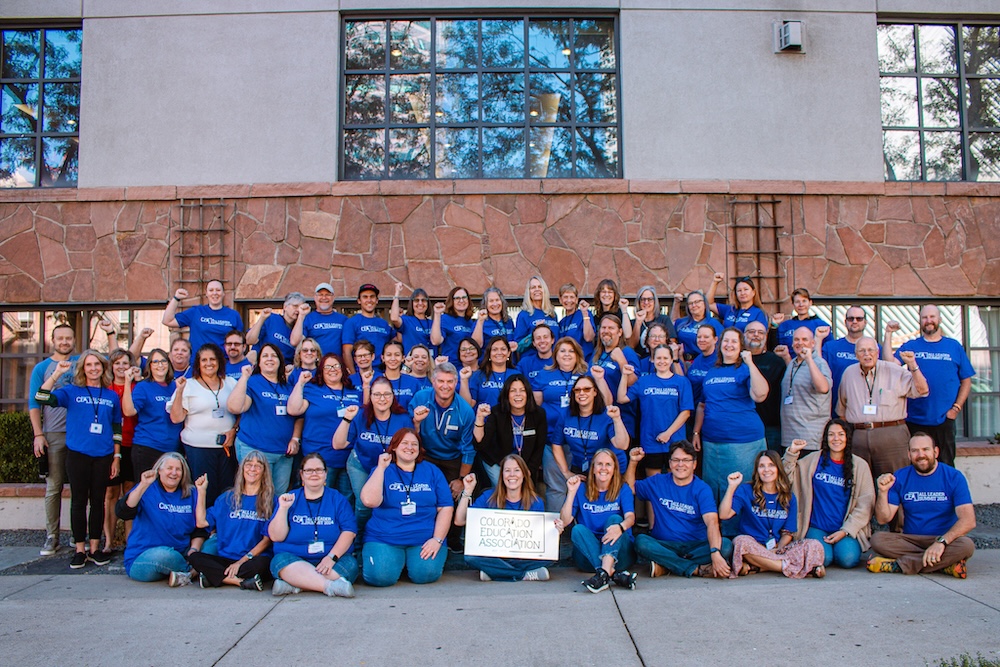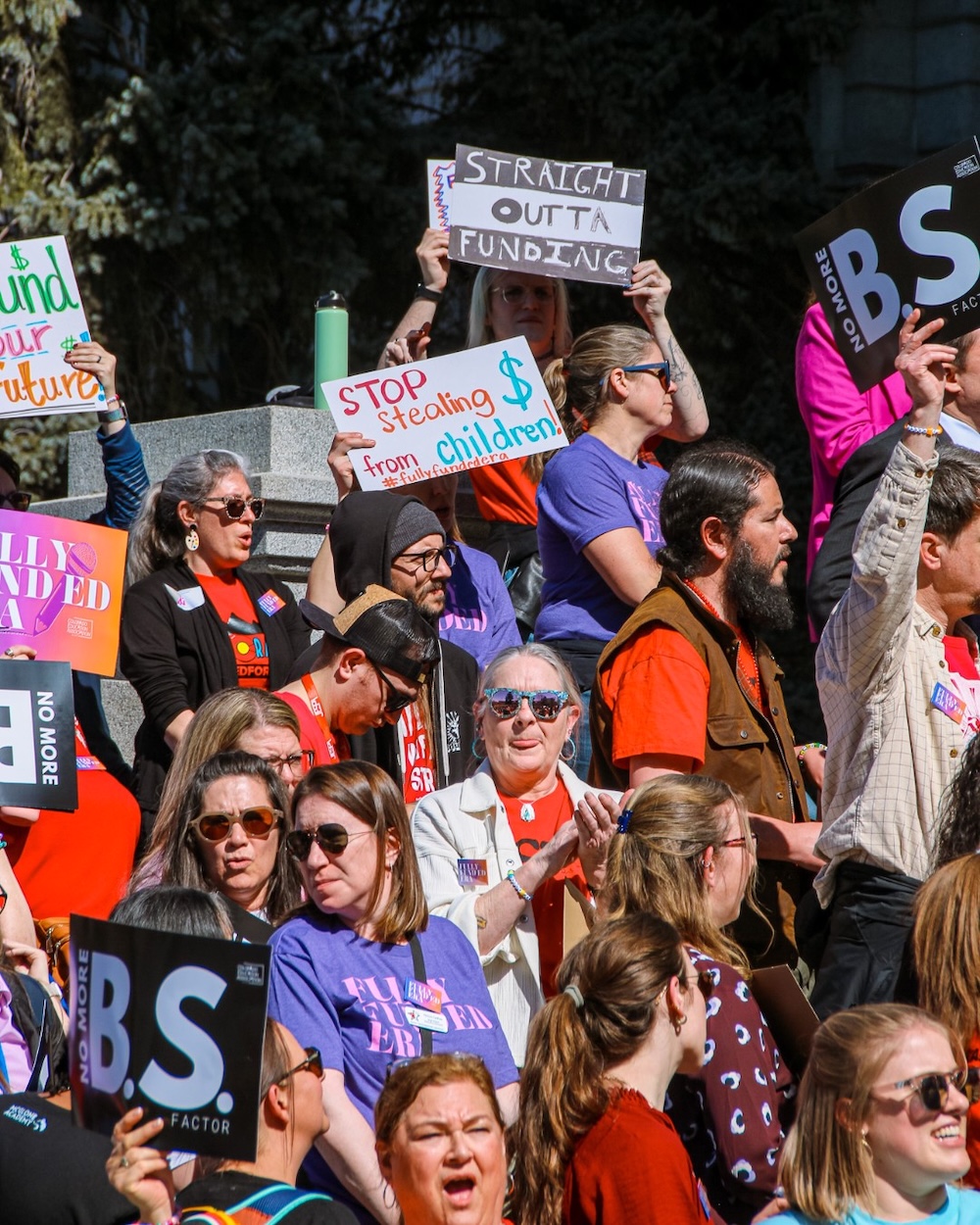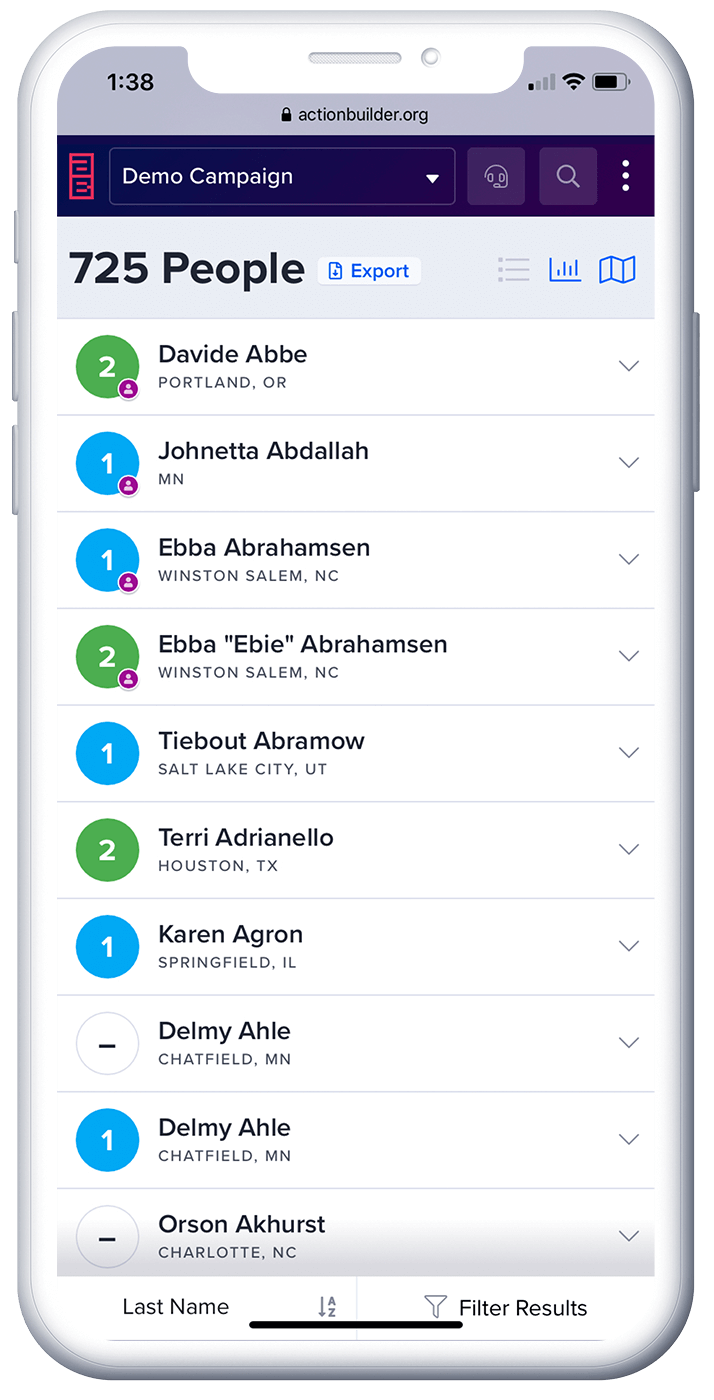
The Colorado Education Association (CEA), an affiliate of the National Education Association (NEA), represents nearly 40,000 K-12 teachers, education support professionals, higher education staff, retired educators, and students preparing to become educators across the state. The union organizes units ranging from dozens to thousands of members from every corner of the state, from the city of Denver to rural communities in the Great Plains and the Rockies.
Adapting to these different contexts and keeping track of a range of campaigns requires a tool like Action Builder, an easy to use and powerful tool designed by organizers, for organizers. I recently had the opportunity to chat with Lindsay Theo, the Center for Organizing Manager at the Colorado Education Association, to hear more about how these campaigns come together.
You can learn more about Action Builder here, sign up for a live demo here, or email us at join@actionbuilder.org to get started using the tool.
Thank you for joining us today! Would you please introduce yourself?
My name is Lindsay Theo. I’m the manager of the Center for Organizing in Colorado, where we are using Action Builder to try to win first collective bargaining agreements in a state where there’s currently no clear pathway. And so we’re using it across the state on multiple campaigns, from units of 25 to units of 3000.
Can you explain what you mean when you say there is no clear pathway to winning first collective bargaining agreements in Colorado?
Yes, so Colorado is a permissive bargaining state, which means the employer always has the right to say no. And so for us, we are running our campaigns a little bit like a private sector pressure campaign where we’re testing people multiple times before we even go public and then using collective action to try to pressure the employer to agree to recognize the union and then to bargain a contract. Ultimately we’re trying to win a statewide collective bargaining bill, but when we attempted to pass a bill a few years ago we were told all you had to do is ask [your employer and they will recognize the union]. And so we took them up on that challenge and launched a lot of campaigns simultaneously in both rural Colorado and in metro areas to try to prove it is not just that easy.

Wow. So that’s the stage of the campaign you’re in now, sort of calling their bluff when they say, “You can have it, just ask for it.”
Yep, we have a statewide campaign strategy of running all these mini campaigns as tactics to drive the strategy of proving it’s not that easy and that without a statewide collective law it’s chaos. And we’ve had places where we’ve absolutely lost because the boss has all the power, but then flipped school boards and rallied the community to ultimately win.
“As a long-time organizer, when I opened Action Builder up, I was like, ‘It’s a wall chart? Sold!’ Because it mimics the things that a lot of us came up within the labor movement using but allows us to do it a little bit differently.”
Compared to organizing in a different state that isn’t a permissive bargaining state, this sounds a bit more complex. Has that been your experience? You’re building out what sounds like advocacy campaigns as a prerequisite to organizing campaigns. Is that right?
We’re trying to build out militancy and the ability to track our structure tests to make sure we have the structure necessary before we go public on a campaign. We run two hard tests after the probing phase before we go public because it’s important for us to be able to see how quickly our members can move something because of the turnover in education, specifically in support staff, which is what we’re really focused on doing.
Support staff like teachers aides…
Bus drivers, custodians, support staff, cafeteria workers, para educators, office staff, maintenance and beyond.
The folks who probably get paid the least, work the most unpredictable hours.
And who work multiple jobs to be able to afford this one job they have.

Right. You mentioned rural versus urban organizing. Do you take the same approach or are there different ways you have to approach those contexts?
I think we take a really similar approach. Organizing is organizing, and it’s been my experience that when you think things are going to be easy, that’s when they’re the hardest. And so you might think of a suburb of Denver being like, “Oh, well they’re so progressive, they always vote blue. They’re going to be with us.” But a boss is a boss. And so it is a very similar approach.
The scale of the campaign, obviously, is just different. Somebody flipping to be against you hurts a lot more on a campaign of 35 than on a campaign of 3000, but somebody becoming a member on a campaign of 35 has a different level of impact than on a campaign of 3000. So we run very data driven campaigns with very clear benchmarks that we want to hit along the way. And if we don’t hit those, then we use the data and analyze if the campaign is viable. We have to understand, what’s the reason we didn’t hit the benchmark? And do we need to pivot from there?
“The activist feature just allows our members to be owners of their campaign and make real concrete contributions to it.”
Colorado is a big state. What’s the breakdown in terms of folks at the top managing the larger campaign, versus the leads in different regions or districts, and then the activists on the ground?
So I would say we try to do a 1-to-10 model, very typical for activists to supporters. So as we’re growing supporters, we want to make sure we have one activist doing that for every 10 people who have told us yes, that they’re with us. From there, organizers have anywhere between 20 and 30 leaders that they’re responsible for. So as they get more leaders, then we staff up rather than staffing up in the beginning. So every campaign starts with one organizer until we have a need for others, because there’s so much responsibility, and their job is coaching leaders, and you can only have so much capacity in doing that. We have six organizers who lead campaigns and sometimes work together, and then they’ll work with other staff to support that work.
I like to talk about Action Builder first by hearing about what the process looked like before you had the tool. So what would this have looked like prior to Action Builder?
It was a pain point for me. I used to work for a different labor union with somebody who is at Action Builder now who built me a beautiful database that did everything I wanted, and then we both left that place, and when I came [to CEA] I was like, ‘Oh my God, we’re using Google Sheets.’ And it terrified me as an organizer.
There’s sort of two options. Either your data is very insecure because people can enter it themselves, or your data is really secure and you are the person who is calling the activists, and they’re not owning the campaign in the same way.
I think we signed our contract with Action Builder within our first few weeks of the campaign because we knew we needed an organizing database to be able to do this. For me, as a long-time organizer, when I opened Action Builder up, I was like, ‘It’s a wall chart? Sold!’ Because it mimics the things that a lot of us came up within the labor movement using but allows us to do it a little bit differently.

We still have paper wall charts in our office because there is nothing better than paper, but being able to pull out data and enter data in real time in the field was a game changer, especially as boss campaigns happen. Being able to see what is the impact on our numbers, what is the impact by worksite or by job classification or however we might extrapolate the data has been really nice. We didn’t have much of a ‘before Action Builder’, I think, because I knew we can’t invest a million dollars in a campaign if we don’t have a way to actually have good data. So yeah, Jenn Diagostino, [Senior Partner Success Specialist at Action Builder], taught me that a long time ago.
You can learn more about Action Builder here, sign up for a live demo here, or email us at join@actionbuilder.org to get started using the tool.
Jenn’s the best. So now the big question: How are you using Action Builder in this campaign?
For us, we’re really trying to make sure we’re building member-driven unions. And a great way to test that is getting people to put in data. We use the activist feature as a way where people can actually see their own personal progress in the scale of a huge campaign to see where they are, what they need to do, what their small slice of the pie is. And I think that was the biggest learning curve for organizers and leaders. The easiest thing is putting in the effort to train folks upfront and early, so as the campaign progresses, we’re not at the height of escalation trying to get people to get their Activist ID logged in and understanding how to optimize routes when they’re door knocking. For me, that is the feature that is the most impactful. [The activist feature] just allows our members to be owners of their campaign and make real concrete contributions to it.
“I think that Action Builder just goes above and beyond what we could do with anything else.”
All of that requires that folks are able to get up and running with the tool relatively quickly. So what does that onboarding training process look like?
This summer we did a lot of house calling on different campaigns where we would pair staff organizers up with members organizers, and that was sort of the initial onboarding to Action Builder for member leaders. ‘Here, Jeff, use my phone, it’s already logged in. Look how easy it is to do that.’ In the education world we have the philosophy of “I do. We do. You do.”

In a campaign of this scale, you have to have folks who are less tech savvy. Have you been successful in convincing those folks to move away from pen and paper so that they’re not having to do data entry at the end of the day?
I think some people, yes, and, if I’m being honest, other people might be savvy in a different way. They’re good at talking to the hard people in their work site, and then we can pair them with a leader who is good at the data entry piece or whatever it might be. I think there is no perfect tool, and thinking that we’re going to sacrifice the good for the perfect is not a place that we have the luxury of living in. One thing I have heard people do is they’ll do voice-to-text for notes, and that has been really helpful for people that have visual impairments.
Was there anything that I should have asked about that I didn’t?
One of the advantages that Action Builder brings is that it has people that were organizers building out a product for organizers to use. And I think that is the biggest difference between this [and other tools]. You can tell that when you’re using a database that is built by people who only think about data and don’t understand why we’re using it in certain ways. It can feel really clunky. The advantage Action Builder has is that you have people who have done this work who understand why I might be asking for something or who at least know to ask why I might be asking for something to get there. I think it has made the process of understanding how to use it a lot easier for me personally. I think it was why it was recommended to me as a product as well. I think that it just goes above and beyond what we could do with anything else. So yeah, I want to give the staff shout outs!
I will absolutely pass along those shoutouts. Thank you so much Lindsay!
You can read more about the Colorado Education Association here.
You can learn more about Action Builder here, sign up for a live demo here, or email us at join@actionbuilder.org to get started using the tool.